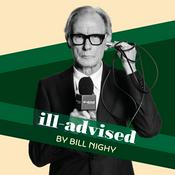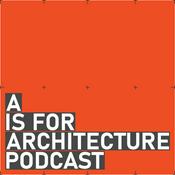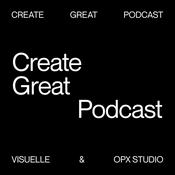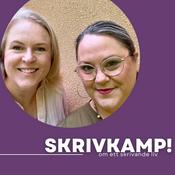Tillgängliga avsnitt
5 resultat 190
- Ep 190: The Truth about TitlesThe Truth about Titles explores why architectural titles matter, why they don’t, and how their meaning shifts over the course of a career.--------59:39
- Ep 189: Holiday Gift Guide for ArchitectsDiscover the ultimate Holiday Gift Guide for Architects – curated picks, tools, and books that every designer will actually want to unwrap this season.--------1:01:39
- Ep 188: Changing PathsAt some point in every career, the path ahead stops looking like the one behind it. The work that once defined you begins to shift, not because it lost value but because you start to see yourself differently within it. For architects, that realization can be complicated because we build our identities around what we design, who we work with, and the roles we play in the process. Change has a way of testing all of that, forcing us to ask what parts of our career still fit and which ones need to evolve. Today, Andrew and I are talking about what happens when you change course, the challenges and rewards of starting fresh in familiar territory, and how to recognize when it is time to head in a new direction. Welcome to Episode 188: Changing Paths. [Note: If you are reading this via email, click here to access the on-site audio player] Change is something both Andrew and I have lived through, and in this episode we wanted to take a closer look at what that really means. Each of us has reached a point where our careers needed to evolve, and the decisions that came next reshaped how we think about design, leadership, and purpose. This conversation isn’t about following a formula or finding the perfect next step; it’s about the reality of letting go of what feels safe and learning from what comes after. We talk about the adjustments, the uncertainty, and the satisfaction that can come from realizing you are still capable of growing no matter how long you have been doing this. Our hope is that anyone listening who might be facing a similar decision can find something here that helps them recognize that change, when you allow it, can be the most constructive part of your career. When the Path Starts to Bend (Recognition) jump to 3:21 Bob's Perspective: There comes a point in most careers where the work you are doing and the person you are becoming start to drift just far enough apart that you can feel the gap forming. For me, it wasn’t about dissatisfaction or failure, but about balance. I began to recognize that not every professional decision I made was about me anymore. I had a family to provide for, and whether I liked it or not, that reality had to shape how I evaluated opportunity. The irony, of course, is that architecture doesn’t exactly offer financial guarantees no matter where you go, but I started to realize that what I was looking for had begun to shift. I wasn’t just thinking about projects anymore; I was thinking about impact. Much of that realization came through the writing I was doing for the blog. Storytelling forced me to look at the profession differently and to think about how architects explain what they do and why it matters. Over time, I began to see that my influence didn’t have to come solely from drawing lines. I still think of myself as an above-average designer, but I started to value other skills that had developed along the way: communication, teaching, and helping people think differently about architecture. Those areas began to feel like ways to make a broader difference, and that awareness started to change what I wanted from my career. When the opportunity came to move from a small, residentially focused practice to a larger commercial firm, the attraction wasn’t about leaving one thing behind for another; it was about growth. I wanted to see what would happen if I stepped into an environment that operated at a completely different scale. More people meant more challenges, more opportunities for leadership, and more potential to help shape culture. Change has never scared me. I have always seen it as a chance to redefine myself and fix a few flaws that I know I have. Every new chapter is an opportunity to rethink how I communicate, to see how others experience me, and to test whether I am living up to the expectations I set for myself. The conversation that started the transition wasn’t strategic, and it wasn’t planned. I asked Andrew Bennett, one of the owners at BOKA Powell, a simple question: “Do you think my skill set would translate to a larger office?” That was it. No job hunt, no sales pitch, just curiosity. But in hindsight, that question planted a seed for both of us. Over time, my goals evolved dramatically. I used to want to be known as an exceptional designer, then I wanted to be a better communicator, then a collaborator, and now I think of myself as a thought leader, though it is hard to be a shepherd without any sheep. Writing made me aware of that evolution. It reminded me that what I wanted most was to make things better for others. Andrew Hawkins likes to joke that I have a savior complex, but he’s not wrong. Most of my career decisions over the last twenty years have been attempts to align my work with that impulse, to do work that helps people rather than just impressing them. Andrew's Perspective: The realization that I might want to change directions came slowly, long before I admitted it to myself or even identified its occurrence. For years, I had been running my own firm, managing every detail, balancing design, business, and people. Even at the peak of twelve or fourteen people, it always felt like I was carrying the entire weight. Of course, this was because I was doing most of the heavy lifting tasks. I realize now that a major turning point may have started when I hired someone of a similar level and experience in the profession, hoping they would eventually take on some of the responsibility that had become overwhelming. But they passed away suddenly, and it caught me off guard, leaving an impact I didn’t recognize at first. In hindsight, it was probably a moment that quietly shifted how I viewed my role, my firm, and the limits of what I could sustain. At that time, the daily effort began to feel repetitive and draining. I felt as though I was pushing the same rock uphill only to have it roll back down, and at times, crush me with its weight. The creative energy that once defined the practice had become secondary to the grind of management and business operations. However, due to the fact that my office was mainly comprised of young employees and student interns, I was consistently providing guidance to them. This is common for almost anyone who reaches a certain level of experience in our profession, so it wasn’t extraordinary. But I realized that I enjoyed that process as a significant part of my role. So this renewed a semi-forgotten notion; I had always wanted to teach. When I was in college and graduate school, my original plan was to go straight into teaching, never really considering practice as part of the picture. So when the chance came to teach part-time, it felt invigorating and exciting in a way that practice and the firm work no longer did. Even then, while teaching part-time, I didn’t imagine making the move to teaching full-time. It was simply a side commitment that helped me reconnect with something meaningful. But over time, both internal and external factors continued to nudge me further in that direction. What made the idea difficult was the feeling that leaving practice would mean abandoning what I had built: a firm, a name, and twenty years of work. It felt like betraying a version of myself. I had devoted and sacrificed so much of myself and my life into establishing something independent that the thought of walking away from it, even for something with potential, felt like a loss. It felt like giving up, like abandoning a child. It was not easy, and I am still not sure I am over it after several years. I am still working on letting go and not seeing it as failure. I am simply moving into another phase of my career and life and learning how that works. Trading Places (Transition) jump to 14:06 Bob's Perspective: The biggest adjustment I had to make when I joined a larger firm was learning how defined the roles were. In my previous offices, I did everything from concept design to field coordination, and while that breadth came with its challenges, it also gave me control and continuity. If I wasn’t there, things waited on me, which at the time felt like both a burden and a compliment. At BOKA Powell, the structure was completely different. Project Designers, Project Architects, and Project Managers all had distinct responsibilities, and understanding who handled what took time. The process wasn’t less collaborative, but it was more specialized. That specialization made the machine efficient, but it also meant I had to learn to trust people to do the work I had always done myself. It was harder than I expected. The pace was another shock. I probably shouldn’t have been surprised by the difference between an office of eight and one with a hundred, but it still caught me off guard. I had to figure out which decisions required collaboration and which I could make on my own. Even as a principal, there was an invisible line between what was mine to solve and what needed higher approval. That took patience to learn. The larger the organization, the more the success of one person depends on everyone else being aligned, and that coordination takes time. Once I began to understand the rhythm of how information moved through the office, I started to see how scale itself can become a design constraint - not just a logistical one, but a creative one too. Adapting to that new rhythm meant rethinking how I approached design. The team dynamic was different, the process was different, and even the codes were different. At times I felt like I had the practical value of someone five years out of school. I had plenty of experience as a leader and communicator, but the act of being an architect was distinct at this scale. The confidence I once had in high-end residential work didn’t automatically transfer to commercial projects. It took more time, more collaboration, and more humility. The details I used to solve instinctively now required layers of coordination across disciplines.--------59:28
- Ep 187: Objects of DesignArchitects explore the stories behind objects of design that remind us why design matters — revealing creativity, purpose, and meaning in everyday things.--------59:32
- Ep 186: The Rules of ModernismEvery rule was made to be broken, except in architecture, where even the act of breaking rules seems to come with its own set of rules. Modernism promised liberation from the past, but it quickly wrote its own commandments into the story—flat roofs, open plans, white walls, and exposed structure became the expected vocabulary. A movement that arrived as rebellion soon carried the weight of convention, and those conventions still shape how we design and judge buildings today. This week, Andrew and I are taking a closer look at the commandments of Modernism—where they came from, why they matter, and what they mean for the way we practice now. Welcome to Episode 186: The Rules of Modernism. [Note: If you are reading this via email, click here to access the on-site audio player] If you are interested in seeing just a few of the houses I mentioned on the podcast, you can see them listed on the Realtor.com (here and here are just a few of them) The Roots of Modernism jump to 6:30 Modern architecture did not emerge in a vacuum. It was a response to seismic shifts in society, technology, and culture that took place in the late nineteenth and early twentieth centuries. Industrialization had transformed the way people lived, cities were expanding at unprecedented rates, and new materials like steel, reinforced concrete, and large sheets of plate glass were suddenly available to architects. These inventions were not simply practical tools, they were symbols of a new age. Architects began to ask why they should keep designing buildings that looked like medieval castles or classical temples when the world around them had become faster, lighter, and more efficient. The very idea of progress seemed incompatible with copying the past, and so Modernism positioned itself as the architecture of a new century - an architecture that would represent industry, rationality, and optimism for the future. This rejection of the past was more than an aesthetic preference, it was a manifesto. Ornament was not just unnecessary, it was cast as dishonest and wasteful. Historical references were treated as evidence of cultural stagnation. In their place, Modernists put forward ideas of functional clarity, open planning, and structural honesty. The promise was bold: architecture would no longer serve as a backdrop for tradition, it would become a tool for shaping a better society. Housing would be healthier, cities would be more efficient, and design would finally align with the realities of modern life. It was not only about how buildings looked, but about how they could transform the way people lived … and that is why the roots of Modernism matter to this conversation. The movement began as a radical break from the architectural traditions that came before it, yet it also established a new set of values that quickly hardened into conventions of their own. Before we can explore the “rules” of Modern design, we need to understand the cultural and historical conditions that gave rise to them. Only then can we appreciate the irony that a movement born from revolution became one of the most codified design languages of the twentieth century. By the time Modernism had established itself internationally, the movement that began as rebellion had already created its own set of unwritten rules. Architects may not have published them in a single manifesto, but they were understood all the same. You could look at a building and know whether it was ‘Modern’ or not, based on a handful of essential qualities. These rules were never carved into stone, yet they became the code that defined the movement for decades. To understand Modern design, and to really grasp how it operates, we need to lay out those unspoken commandments - the ideas that quietly dictate what belongs inside the Modernist tradition and what falls outside of it. The Ten Commandments of Modernism jump to 13:42 Modernism never published a rulebook, but anyone who studied it - or even just walked through a few of its buildings - could tell that certain expectations were always in play. These weren’t written down in manifestos or carved into stone tablets, yet every architect seemed to know them. They became the quiet commandments of Modern design, the guidelines that told you when a building belonged to the movement and when it strayed too far. What I want to do is call them out, one by one, and see how they’ve shaped our understanding of Modern architecture. Thou Shalt Embrace Function When people talk about Modern architecture, the first thing they always bring up is ‘form follows function.’ That phrase is almost a commandment in itself. The idea is that buildings should be driven by purpose, by use, not by ornament or whim. On paper it sounds simple, but in practice it gets tricky. What happens when function alone doesn’t make a building beautiful, or when the function is flexible? The irony is that many of the architects who pushed this commandment the hardest were also the ones who added their own stylistic flourishes. Corbusier gave us pilotis and roof gardens, and Mies obsessed over proportions in ways that went far beyond pure utility. So yes, function is at the heart of it, but we also know that the story is more complicated. This is where Modernism becomes less about a single rule and more about a shared belief system. Thou Shalt Honor Simplicity Simplicity is the soul of Modern architecture. Clean lines, restrained geometry, uncluttered spaces. But don’t mistake simplicity for easy. The cleaner a design is, the more difficult it becomes to execute. When there’s nowhere to hide, every joint, every alignment, every proportion has to be perfect. That is why Modernism often feels more expensive, not less. A perfectly simple box can take as much effort as a Gothic cathedral, just in a different way. The lesson is that simplicity is not about doing less, it is about doing things with greater discipline. Thou Shalt Reject Ornament This is the commandment everyone remembers. Modernism declared war on ornament. For centuries, buildings had been covered in carved details, cornices, moldings, scrollwork, all of it. Modern architects came along and said, ‘Nope, none of that. Strip it away.’ A wall should be a wall, not a canvas for decoration. But here’s the thing, removing ornament didn’t mean removing expression. It just shifted expression to proportion, detail, and material. And I’ll argue that sometimes those ‘simpler’ details are actually harder to pull off. A Modernist railing detail can cost more than an entire set of classical moldings, because the tolerances are tighter and the craftsmanship has to be flawless. So, rejecting ornament didn’t make architecture cheaper or easier, it just made it more precise. Thou Shalt Express Structure Honestly Modernism elevates structure into aesthetics. Columns, beams, slabs—these are not things to be hidden, they are things to be celebrated. You are supposed to be able to read how a building stands up just by looking at it. Mies made this an art form, and Corbusier turned structure into a sculptural gesture. But let’s be honest, structural honesty is often more of an idea than a reality. Plenty of Modern buildings cheat a little, exaggerating one element or concealing another to tell a clearer story. So this commandment is less about literal honesty and more about the appearance of honesty. It is about making the building feel like it is telling the truth, even if you are editing the story behind the scenes. Thou Shalt Be True to Materials Concrete should look like concrete. Steel should look like steel. Glass should be transparent, not painted to imitate something else. This commandment is about authenticity, a refusal to disguise or imitate. That honesty elevates materials into beauty. Brutalism is the most extreme example, celebrating raw concrete in all its roughness. But the challenge is that technology complicates this purity. Today we have coatings, composites, high-performance materials that don’t always look like what they are. So being ‘true to materials’ becomes less about absolute purity and more about staying within the spirit of authenticity, even in a world where materials are rarely simple. Thou Shalt Embrace Light and Openness Light is sacred to Modern design. Think ribbon windows, glass curtain walls, open floor plans. These are not just aesthetic moves, they are about a new way of living. Healthier, brighter, more transparent. This is where Modernism broke radically from the past—away from dark, compartmentalized interiors, toward spaces that felt connected to the world outside. And this commandment is still alive today. Every client, whether they know it or not, is chasing light and openness when they say they want a ‘modern’ home or office. It has become so fundamental that we forget it was once revolutionary. Thou Shalt Respect the Grid The grid is the invisible backbone of Modernism. It provides order, clarity, and discipline. Whether it is structural bays, window spacing, or floor tile layout, the grid is sacred. It’s one of those rules where most people never notice it, but architects do, and we get irritated when someone breaks it. A mullion that’s out of alignment or a window that doesn’t land on the grid can ruin the entire composition for an architect. Respecting the grid is about more than geometry, it’s about communicating that the building is orderly, rational, and disciplined. It tells you that someone cared about how the parts fit together. Thou Shalt Flatten the Roof The flat roof might be the most recognizable symbol of Modernism. You can look at a building from a hundred yards away, see that crisp horizontal line, and know what you’re dealing with. But here’s the dirty little secret, flat roofs leak. They always have. Contractors hate them, homeowners eventually learn to hate them, and yet architects keep drawing them. Why?--------57:25
Fler podcasts i Konst
Trendiga poddar i Konst
Om Life of an Architect
A gifted storyteller communicating the role and value of architecture to a new audience, host Bob Borson uses the experiences acquired over a 25-year career to inform his podcast. A small firm owner, architect, and college design instructor, co-host Andrew Hawkins brings his insight from his 20 years in various roles within the profession. It responds to the public curiosity and common misunderstanding about what architects do and how it is relevant to people’s lives, engaging a wide demographic of people in a meaningful way without requiring an understanding of the jargon or knowledge of the history of the profession. With a creative mix of humor and practicality, Borson’s stories are informative, engaging, and approachable, using first-person narratives and anecdotes that have introduced transparency into what it really means to be a practicing architect. To learn more about Bob, Andrew, and what life is like as an architect, please visit Lifeofanarchitect.com
Podcast-webbplatsLyssna på Life of an Architect, Yada Yada och många andra poddar från världens alla hörn med radio.se-appen
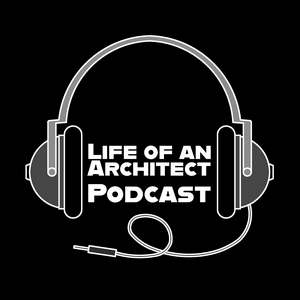
Hämta den kostnadsfria radio.se-appen
- Bokmärk stationer och podcasts
- Strömma via Wi-Fi eller Bluetooth
- Stödjer Carplay & Android Auto
- Många andra appfunktioner
Hämta den kostnadsfria radio.se-appen
- Bokmärk stationer och podcasts
- Strömma via Wi-Fi eller Bluetooth
- Stödjer Carplay & Android Auto
- Många andra appfunktioner


Life of an Architect
Skanna koden,
ladda ner appen,
börja lyssna.
ladda ner appen,
börja lyssna.


